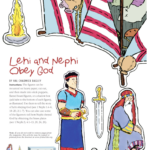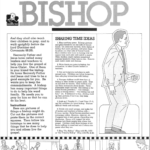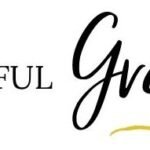[ad_1]

Title page of the Book of Mormon
The Title Page was Translated from the Book of Mormon
The title page of the Book of Mormon was written on the last leaf of a collection of books in the gold plates and is considered to have been written by Moroni. The preface tells us that the contents of the book are a record of the Nephites, Lamanites, and Jaredites. It also tells us that the purpose of the Book of Mormon is to testify of Christ.
Write the following questions on the board and have the children listen for the answers as they watch the below video. The first part is from Moroni 10 and the last part, from 0.58 to the end, are words from the Title Page of the Book of Mormon. Stop the video at the parts that answer the questions and discuss them.
- Who is the Book of Mormon about?
- Who was the Book of Mormon written to?
- Why was the Book of Mormon written?
Purpose of the Book of Mormon
To Bear Testimony of Jesus Christ
The purpose of the Book of Mormon is stated on the title page–to convince all that Jesus is the Christ.
For Younger Children:
Friend January 2020 “Come Follow Me for Little Ones” (Let your children look at and hold a copy of the Book of Mormon. Help them point to the subtitle, Another Testament of Jesus Christ) Read the full title of the Book of Mormon, including the subtitle, “Another Testament of Jesus Christ.” Put a picture of the Savior somewhere in the pages of a Book of Mormon. Help your children flip through the book and find the picture. You could do this repeatedly, and every time you find it, help your little ones say, “The Book of Mormon is about Jesus!”
Friend January 2020 “Bright Idea: The Book of Mormon is about Jesus”
Invite the children to share stories they know from the Book of Mormon, using pictures 67–86 in the Gospel Art Book or other pictures you have. And/or have everyone draw their favorite Book of Mormon story. Then have each child tell about their picture. Briefly tell them how the Book of Mormon has strengthened your faith in Jesus Christ.
Friend May 2012 “The Story of the Book of Mormon” The below pictures could be used to help the children review and find their favorite Book of Mormon story.




For Older Children:
Come, Follow Me—For Home and Church: Book of Mormon 2024 “Introductory Pages of the Book of Mormon “Let your children look at and hold a copy of the Book of Mormon. Help them point to the subtitle, Another Testament of Jesus Christ. You might also help them find, on the title page, the phrase “Jesus is the Christ, the Eternal God, manifesting himself unto all nations.” Help them understand that this means the Book of Mormon teaches us about Jesus Christ.
Friend January 2024 “Another Testament of Jesus Christ”
All of the prophets in the Book of Mormon taught about Jesus.
Friend January 2016 “The Book of Mormon Teaches about Jesus Christ” Take turns reading these scriptures. Each talks about a Book of Mormon prophet who taught about Jesus. Match the scripture with the prophet who said it.
Invite the children to share stories they know from the Book of Mormon, using pictures 67–86 in the Gospel Art Book or other pictures you have. And/or have everyone draw their favorite Book of Mormon story. Then have each child tell about their picture. Briefly tell them how the Book of Mormon has strengthened your faith in Jesus Christ.
Friend May 2012 “The Story of the Book of Mormon” The below pictures could be used to help the children review the stories and choose their favorite.




Friend January 2020 “The Book of Mormon Tells of Christ” Song. Sing-along Video
3. The Savior visited their land After He had risen in His glory. He blessed the children just like me; I love to read their story. The Book of Mormon tells of Christ And helps me feel the Holy Spirit. Heavenly Father’s voice is calling me, And the scriptures help me hear it.
Friend January 2024 ” Power in the Book of Mormon” President Nelson said, “The Book of Mormon is . . .Another testament of Jesus Christ. Many prophets who wrote it saw Jesus Christ. The Book of Mormon includes their testimonies of Him. I invite you to read the Book of Mormon. As you read, I encourage you to mark each verse that speaks of the Savior. You will become closer to Him through this process. And changes, even miracles, will begin to happen. The truths of the Book of Mormon have the power to heal, comfort, strengthen, and cheer our souls.”
President Nelson invited us to look for Jesus Christ’s name as we read the Book of Mormon. Jesus has many names in the scriptures. Here are some you can look for!
This video provides visuals for a narrated, word for word, “Introduction”.
Introduction
Have the children turn to the “Introduction”. Explain that the “Introduction” provides more detailed information about the origin and the contents of the book.
Worksheet – Instruct the children to fill in the blanks in Section A on the worksheet, using paragraphs one and two of the “Introduction” for reference. After they are done, go over the answers together.
SECTION A: Worksheet Answers – The Book of Mormon is a volume of holy scripture. It is a record of God’s dealings with the ancient inhabitants of the America’s and contains, as does the Bible, the fullness of the everlasting gospel. The book was written by many ancient prophets by the spirit of prophecy and revelation, and was abridged by a prophet-historian named Mormon.
• What does abridged mean? It means that Mormon studied records other prophets had written, and then he took important parts from each of their records and wrote them on the gold plates. The Book of Mormon is named after Mormon because he compiled the record. (Show the picture of “Mormon Abridging the Plates” to the children.)
Now have the children fill in the blanks in section B on the worksheet using paragraph six of the “Introduction” for reference. Go over the answers together after they are done.
SECTION B: Worksheet Answers- Joseph Smith told the brethren that the Book of Mormon was the most correct of any book on the earth, and the keystone of our religion, and a man would get nearer to God by abiding by its precepts, than by any other book.
• What did Joseph Smith mean when he said the Book of Mormon is the most correct book on the earth? The Book of Mormon is of God. Books produced by men may contain errors in understanding, perception, and translation.
• What did Joseph Smith mean when he said, “A man could get nearer to God by abiding by its precepts, than by any other book”? Abide means to accept or act in accordance with, and precepts are commandments or principles. So, if we accept or act in accordance with God’s will and obey the commandments and principles found in the Book of Mormon, we will grow nearer to God.
The Book of Mormon is the keystone of our religion.
• What did Joseph Smith mean when he said the Book of Mormon is the keystone of our religion? Show the picture of the arch. Explain that the keystone is the central supporting stone at the top of the arch. The stones would fall without the keystone holding them in place. The Book of Mormon is the keystone of our religion because it supports and explains doctrines and principles that are necessary for salvation. Another reason it is the keystone is that when we receive a testimony of the truthfulness of the Book of Mormon we will know that Joseph Smith was a prophet of God, that the church of Jesus Christ is restored on the earth again, and that Jesus is the Christ.
- This week’s activity page and the image below can help your children understand these words of Joseph Smith in the introduction to the Book of Mormon: “The Book of Mormon [is] the keystone of our religion.” (A keystone is a wedge-shaped stone at the top of an arch that locks the other stones together.) It might also be fun to build or draw an arch with a keystone at the top. What might happen if the keystone is removed? What would happen if we did not have the Book of Mormon? You might read together the last paragraph of the introduction to find out what else we learn when we accept the truth of the Book of Mormon. How can we make the Book of Mormon the keystone of our faith in Jesus Christ?
Ensign January 2016 Consider using a set of dominoes or gathering items from around your home to use as dominoes. Have family members set them up in a line and then push the first one over. Discuss how the Book of Mormon is central to the message of the Church and how it is like the first domino: once we know for ourselves that the Book of Mormon is true, all of the other truths of the Restoration fall into place, just like the other dominoes.
One dictionary defines keystone as “the central wedge-shaped stone of an arch that locks its parts together.” A secondary definition is “the central supporting element of a whole.”
Book of Mormon Student Manual “The Keystone of Our Religion” “A confirming testimony of the Book of Mormon convinces ‘that Jesus is the Christ, the Eternal God’ and also spiritually verifies the divine calling of Joseph Smith and that he did see the Father and the Son. With that firmly in place, it logically follows that one can also receive a verification that the Doctrine and Covenants and the Pearl of Great Price are true companion scriptures to the Bible and the Book of Mormon.
“All of this confirms the Restoration of the gospel of Jesus Christ and the divine mission of The Church of Jesus Christ of Latter-day Saints, led by a living prophet enjoying continuous revelation. From these basic verities, an understanding can flow of other saving principles of the fulness of the gospel” (“The Keystone of Our Religion,” Ensign, Jan. 2004, 3–4).
Book of Mormon Student Manual “The Keystone of Our Religion” President Ezra Taft Benson (1899–1994) testified that the timing of the coming forth of the Book of Mormon shows its significance in the Restoration of the gospel: “Think of that in terms of what it implies. The coming forth of the Book of Mormon preceded the restoration of the priesthood. It was published just a few days before the Church was organized. The Saints were given the Book of Mormon to read before they were given the revelations outlining such great doctrines as the three degrees of glory, celestial marriage, or work for the dead. It came before priesthood quorums and Church organization. Doesn’t this tell us something about how the Lord views this sacred work?” (“The Book of Mormon—Keystone of Our Religion,” Ensign, Nov. 1986, 4).
Reading the Book of Mormon
Read this paragraph from the Introduction to the Book of Mormon:

What are the three things we need to do to gain our own witness of the truthfulness of the Book of Mormon? Direct the children to look in paragraph eight in the “Introduction” for the answer. Write the following answers on the board: 1) Read the Book of Mormon.
2) Ponder its message.
3) Ask God if it is true. If we do these things, the Holy Ghost can testify to us that the Book of Mormon is true.
See the post Reading the Book of Mormon for reading charts and additional teaching ideas about Reading the Book of Mormon
“The Testimony of Three Witnesses”; “The Testimony of Eight Witnesses”
For Younger Children:
This is a super cute idea from Katie Flaniken: for younger kids
My family did this activity yesterday to help illustrate the Testimony of the 3 and 8 Witnesses. I brought out a box that I’d put one of their stuffed toy elephants inside. After we’d read the testimonies, I brought out the box and excitedly told the kids (ages 3 and 4) that I had an elephant in the box. As I’d hoped, they didn’t believe that I had a great big elephant in this little box. So I let grandma look in the box. She bore her “witness” that there was, indeed, an elephant in the box. I asked them again if they believed that there was an elephant in the box now that two of us had seen it. This time they said yes!!
We explained how this was just like the golden plates. We haven’t seen them, but because of the testimonies of these men, we have greater trust that they are indeed real. That’s why we have these testimonies and why they are important.
As expected, the kids were begging to see in the box for themselves. This allowed me to teach about faith and that we believe in things we cannot see. Throughout the rest of the night, each time they asked to see inside the box, I asked them if they still believed that the elephant was inside. They did. So just before bedtime I asked one more time if they believed. Once again they said yes. I explained that sometimes we don’t see evidence of something until after the trial of our faith. And them being patient enough to see inside for themselves was a trial of faith. They laughed when they saw the toy elephant inside.
This simple lesson turned into multiple teaching opportunities for our family and was so easy to prepare.

For Older Children:
Have the children turn the page to “The Testimony of the Witnesses”. Show the picture of “Mormon Abridging the Plates” to the children.
Give them a few seconds to study it. Afterwards put the picture face down on a table. Give each child a paper and a pencil. Ask some of the following questions, and have them write down their answers:
• What was on the shelf and the table behind Mormon?
• What was covering the bench Mormon was sitting on?
• What items were on the table Mormon was working on?
• What was on Mormon’s lap, and was there anything on the floor?
• What colors were Mormon’s clothes, and what decorations did they have on them?
• What was Mormon wearing on his arm, on his head, and on his feet?
Go over the answers together. When several of the children’s answers are the same on any of the questions, ask the children if they think those answers are most likely to be true. Why?
• If a person witnessed an event, would only their testimony about the incident be sufficient in a court of law? No, because they might not remember everything accurately, or they might not be telling the truth.
• Would that person’s version be believed if other witnesses told the same account?
• In 2 Corinthians 13:1 it says, “In the mouth of two or three witnesses shall every word be established”. Why do you think this law of witnesses is important? It helps establish truth.
Point out the witness’s page, and tell the children that God chose men to be witnesses of the Book of Mormon to fulfill the law of the witnesses and to testify of his work.
I can be a witness of the Book of Mormon.
- To help your children understand what it means to be a witness, you could describe to them something you have seen that they haven’t. Then let them do the same for you. This could lead to a conversation about the 11 people who saw the gold plates from which the Book of Mormon was translated. As you read the testimonies together, you could talk about why these witnesses wanted other people to know about their testimonies. Who do we want to tell about the Book of Mormon?
Come Follow Me Primary 2020: Introductory Pages Ask the children to pretend you have never heard of the Book of Mormon before. Invite them to work with a partner to think of ways they could explain to you what it is and where it came from, using details from the introduction. Then let each pair take turns teaching you.
Primary 5: Doctrine and Covenants and Church History “Lesson 9: Witnesses See the Gold Plates,” Link includes additional stories, activities, and lesson ideas.
Have the children think of ways they can be witnesses of the Book of Mormon and its teachings. List their answers on the chalkboard. Have the children dramatize what they could do to be witnesses in particular situations, such as when someone asks them what their church believes or what the Book of Mormon says.
“The Testimony of the Prophet Joseph Smith”
The Book of Mormon was given to us by the power of God.
Book of Mormon Stories: Chapter One “How We Got the Book of Mormon” Video and images about the story of Joseph Smith and the golden plates.

Friend February 2017 “Golden Plates to Book of Mormon”


Friend July 1988 “Calendar Cutouts” Read one scripture each day. Match the highlighted scriptures to the correct picture. Ezekiel 37:15-20, 2 Nephi 3:12; 29:8, Psalm 85:11& Mormon 8:16, Moses 7:62 & Isaiah 29:4, 2 Nephi 26:14-17, Ether1:1 & 2:11, Enos 1:15-16, Mormon 5:12-14, Revelation 14:6, 1 Nephi 1:1 & 9:5, Omni 1:8-9, Introduction to Helaman, 3 Nephi 23:4-5, 3 Nephi 23:6-14, Words of Mormon 1:1-2, Mormon 8:1 & Moroni 10:1-2, Joseph Smith History 1:30-35, D&C 27:5 & 128:20, Joseph Smith History 1:44-47, Joseph Smith History 1:48-50, Joseph Smith History 1:51-52, Joseph Smith History 1:53-54, Joseph Smith History 1:59, Joseph Smith History 1:62, Joseph Smith History 1:67 & D&C 3:preface, D&C 25:1&5-6, Isaiah 29:11, Joseph Smith History 1:61 & 63-65, 2 Corinthians 13:1 & D&C 5:4 &11&13, D&C 19:preface & 26 & 34-35, Joseph Smith History 1:60
Sing “Book of Mormon Stories” (Children’s Songbook, 118)
Brief Explanation about the Book of Mormon
Friend March 1988 “Sharing Time” Learning how to find stories and information in the Book of Mormon. Includes an activity for putting the books in the right order.
- Have each child make his own Book of Mormon storybook throughout the year as they read. Write title for each book on separate page. Then have children write, in their own words, stories of people they learn about in each book and the lessons they learned from the stories. They could also draw pictures or cut out and paste pictures into their storybook.
- Sing “The Books in the Book of Mormon” (More Songs for Children, page 32). Have children arrange titles in correct order before song is completed.

What does translate mean? Translate means to change from one language to another.
Show the paper with the words “Le Livre De Mormon” written on it. Tell the children that the words are French. The English version of these words is “The Book of Mormon”. Show this paper. Both sets of words mean the same thing, but they are different languages.
The gold plates were written in an ancient language that needed to be translated into a language others could read.
Come, Follow Me—For Primary: Book of Mormon 2020 “Introductory Pages of the Book of Mormon”
Show the children an image of characters from the golden plates. Explain that God helped Joseph translate these characters into words we can read and understand.
If someone asked you where the Book of Mormon came from, what would you say? How would you describe God’s involvement in giving us the Book of Mormon?
Introduction to the Book of Mormon Lesson Ideas
Primary 4 “The Book of Mormon, a Gift from a Loving Heavenly Father”
Review Questions:
- What is the Book of Mormon? Who wrote it? (Introduction, paragraphs 1–2. Ancient prophets in America.)
- Why is it called the Book of Mormon and not the Book of Moroni or the Book of Joseph Smith? (Introduction, paragraph 2. The prophet Mormon wrote most of what was on the gold plates, quoting and summarizing what other prophets had written.)
- What is the most important event in the Book of Mormon? Why? (Introduction, paragraph 3. The visit of Jesus Christ to the Nephites.)
- What did Joseph Smith say about the Book of Mormon? (Introduction, paragraph 6.) (See enrichment activity 3.) How do you think reading and studying the Book of Mormon can help you?
- Many prophets (Nephi, Mormon, Moroni, Joseph Smith) have gone through great suffering and hardships so we can have the Book of Mormon. What are three things you need to do to know that the Book of Mormon is true? (Introduction, paragraph 8. Read it, ponder its message, ask God if it is true.)
- What else will we know when we gain a testimony of the Book of Mormon? (Introduction, paragraph 9. That Jesus Christ is the Savior, Joseph Smith is a prophet, and the Church is true.)


Latter Day Kids “What is a Testimony?” Lesson ideas
Ensign January 2020 “Family Study Fun” A fun activity to help the children listen to the introduction as it is read.

- Write the following on index cards, one word per card: Mormon, Lord, Testimony, God, Jesus, Joseph, Plates, Prophet.
- Pass out the cards (one or two per person) and instruct family members to lift the card high when they hear the word.
- Read the introduction to the Book of Mormon aloud.
Please follow and like us:
[ad_2]
Source link























You must be logged in to post a comment.